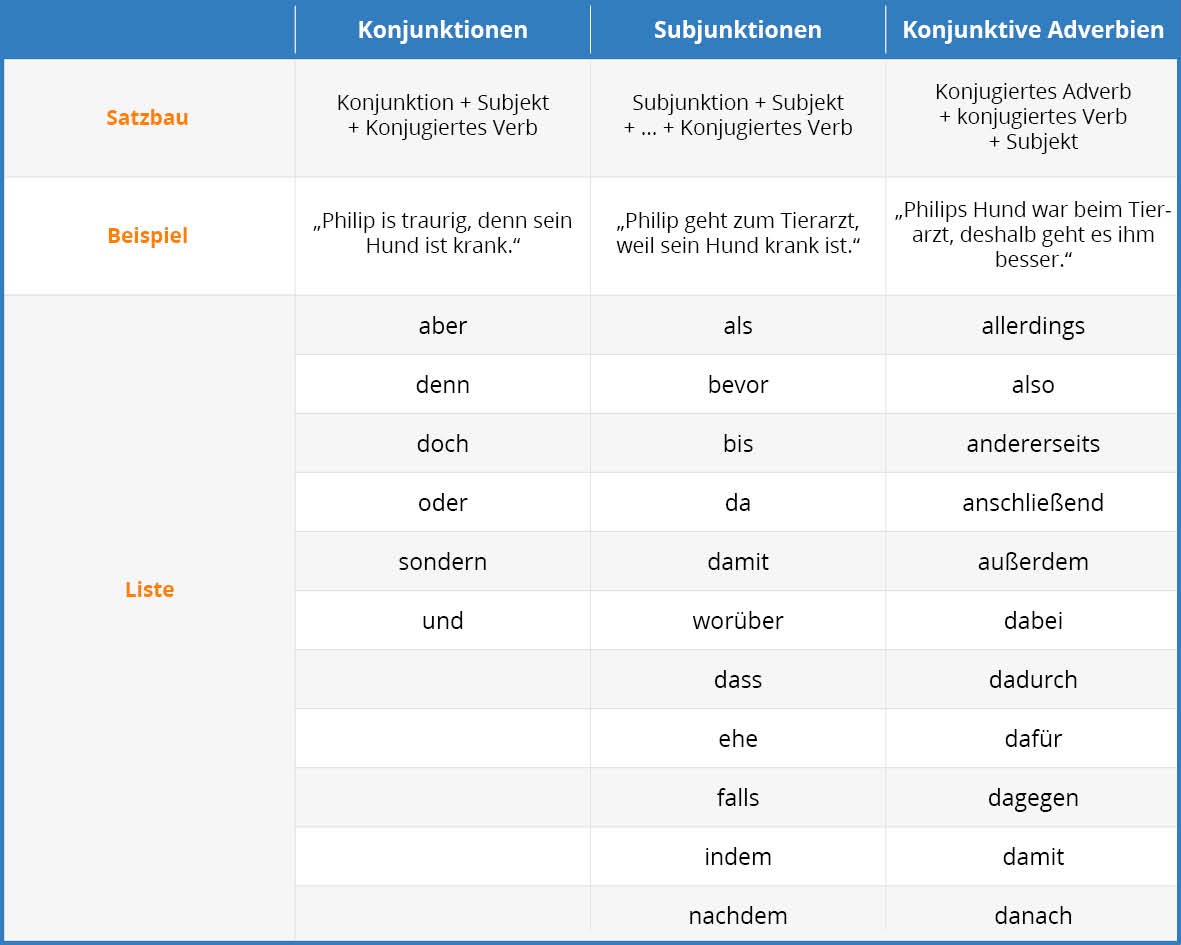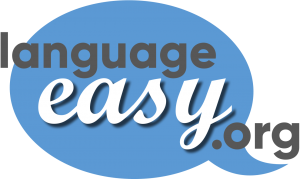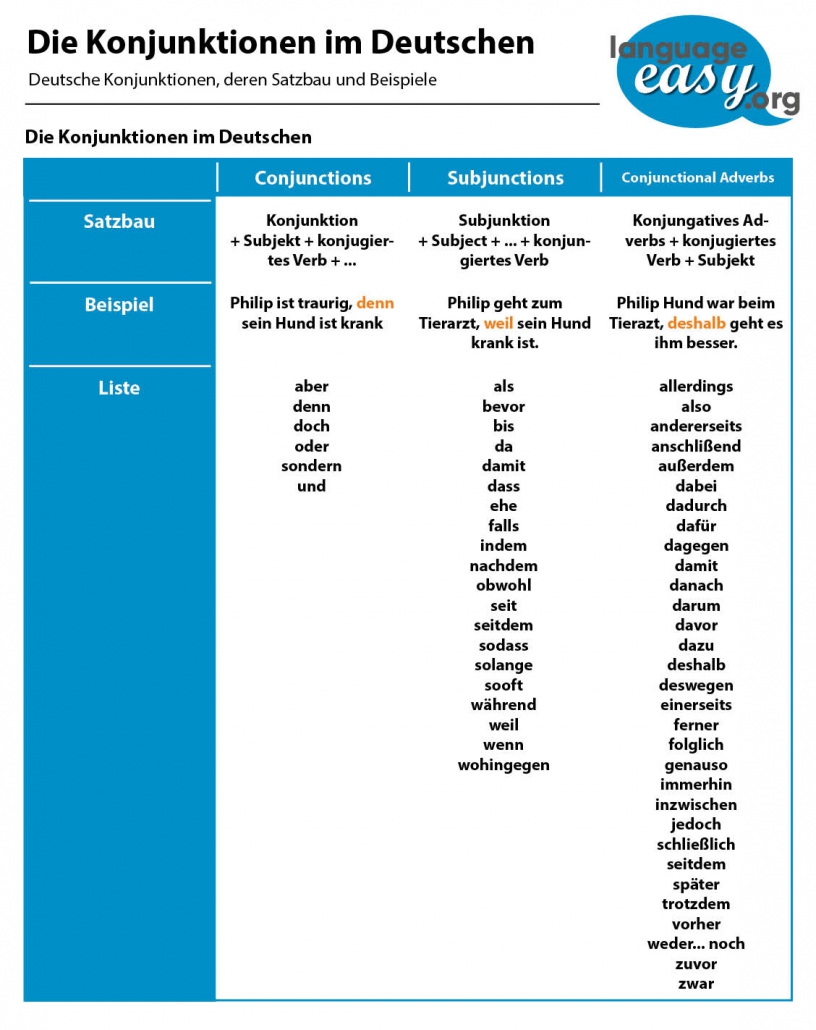German Conjunctions
Konjunktionen im Deutschen – Erklärungen und Beispiele
German Conjunctions – Summary
Zusammenfassung
Conjunctions are used to connect two sentences. You can connect two main clauses (a so called “Satzreihe” in German) or you can connect a main clause and a subordinate clause (a so called “Satzgefüge“).
- The conjunction “und” connects two main clauses to a “Satzreihe”, in case the the two of them are true.
“Das Ei brät und der Magen knurrt.” - The disjunction “oder” also connects two main clauses, but here only one of them has to be true.
“Das Ei brät oder der Magen knurrt.” - Another disjunction “entweder, oder” indicates, that message of the two main clauses exclude each other.
“Entweder brät das Ei oder es knurrt der Magen.” - The conjunction “aber” is used in case one message of a main clause restricts the other.
“Man kann dort gut wandern gehen, aber man kann dort nicht rasten.” - The conjunction “sondern” corrects a negative message.
“Er besucht noch keine Universität, sondern er geht erst in die Schule.” - “Denn” is a conjunction which indicates that one message justifies the other one.
The Subordinate Conjunctions
- Temporal conjunctions: “als, nachdem, bevor, während, seit”
- Local conjunctions: “wo, woher, wohin”
- Causal conjunctions: “weil, da, wegen, denn”
- Consecutive conjunctions: “daher, so – dass”
- Conditional conjunctions: “falls, wenn”
- Final conjunctions: “damit, dass, um – zu”
- Modalen conjunctions: “wie, als ob, je – desto”
Welcome to language-easy.org! Well, as you have clicked on this article, I suppose that you are ready to learn everything you need to know about this basic element of German grammar: The German conjunctions. For sure, many of you might be familiar with conjunctions, as they also exist in English. However, German conjunction differ in form and usage. And, as a highly important part of German grammar, you should master it from the beginning to its end.
In the following, I’d like to describe what the German conjunctions actually are and also which different types of German conjunctions there are. After that, we will have a look at subjunctions and conjunctional adverbs. Finally, we will have a look at a list which will give us an overview about the different topics of this article.
Description of German Conjunctions
Beschreibung der Konjunktionen im Deutschen
Well, let’s have a look at the first topic of this article about the German conjunctions. So, as already mentioned, there are different types of conjunctions. In the following, I’d like to describe each one of them in some detail.
Coordinating Conjunctions
So, this first type of German conjunctions connects two main clauses. Well, in a clause that is introduced by a conjunction, the sentence structure s exactly the same as in a normal main clause.
Conjunction + subject + finite verb + …
Of course, we should add some coordinating conjunctions here. So, try to keep that type of German conjunction in mind. So, coordinating conjunctions are: “aber, denn, oder, und.”
Subjuncions
Now, we come to the next type of German conjunctions. Well, this type is called “subjunctions”. So, that means that in a clause that is introduced by a subjunction, the finite verb is placed at the end of the sentence.
Subjunction + subject + … + finite verb
And, of course, I’d like to give you some examples for this type of German conjunctions, the subjunctions. As already mentioned, please, try to keep them in mind: “bevor, da, dass, falls, weil, wenn, …”. By the way, dependent clauses that are introduced by a subjunction are called conjunctional clauses.
Conjunctional Adverbs
As a last type of German conjunctions, I’d like to list the conjunctional adverbs. Here, the following rule has to be applied: In a clause that is introduced by a conjunctional adverb, the finite verb comes before the subject.
Conjunctional adverb + finite verb + subject + …
Well, some examples for the conjunctional adverbs are “dann, schließlich, trotzdem, zuvor, …”
Now, let’s come to the final part of this article about German conjunctions and look at a short overview about the three types of conjunctions.
Overview about German Conjunctions
Ein Überblick über die Konjunktionen im Deutschen
So, let’s come to the final part of this article about German conjunction and have an overview about the three types. Well, as you already have learned, the type of conjunction has a huge influence on the word order of the main and subordinate clauses. Of course, it is really important to know, which conjunction is of which type – in order to use the correct word order. In the following, I’d like to present a table to you, that will provide you a conclusion of all the three types of German conjunctions.

Exercises
Übungen
Finally, we have reached the last part of this article where you can prove the German skills you have just learned. In the following you will see some phrases that you should complete with the correct terms. Once you have filled all the gaps, just click on the “correct” button and you can see your errors and the correct results. Good luck and… auf Wiedersehen!



